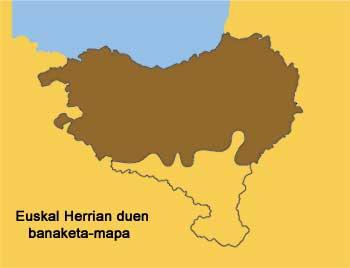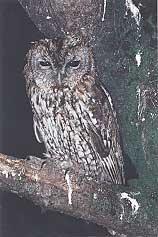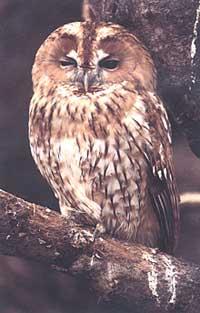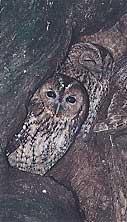Urubi common, Karaheka red forest

L.Dassance and J. In a series of articles published by Elisfran in the magazine “Gure Herria” between 1923 and 25 under the title “The birds of Eskual-Herriko and the choris”, it was explained that the “gau-chori predators” were of two types: One, in need, often lives in the jungles: in Spanish, “hibou” and “duc”. The macerate, without need, is often found in aisles, in the old etches or in the towers of the church: in Spanish, “chouette”. And after having snowed a lot with old junteros, many studying ancient dictionaries, we believe that the Eskualdunes should call kaheka: hura, hura, ordea.
However, the clear and clear classification made by Dassance and Elisfran does not seem enough to us today, and “without need or need”, we have distinguished between different species of night raptors. And so, within the type of bird that these two pioneering writers in the description of the nature of Euskal Herria called “kaheka”, today we distinguish between the mozoloa (Athene noctua), the white owl (Tyto alba), the marsh owl (Asio meus) and the common urubi (Strix aluco), because things are complicated!

However, within the order of the estrigiforms formed by owl and kahekas, this last species, the common urubi (Strix aluco), is undoubtedly the most widespread and abundant species in the Basque Country. As for its appearance, it is very similar to the rest of the stiffness: it always stays erect, with short tail and large, rounded head.
The urubia is a 37-46 cm long bird and a weight between 340-450 g. Of medium or slightly large size to be stiffness. The eyes are completely black, and this is a characteristic feature. In fact, most Basque strictures have orange or yellow eyes. The compact plumage, on the other hand, is brown or gray, and for its picturesque, can be considered cryptic. On the other hand, reason is very evident. And it is that the urubia is a bird of nightlife, and at night the colors can serve for little. On the other hand, the day stops in a safe location, in a perpendicular environment, and in this situation it is convenient that the coloring is as low and invisible as possible.
Urubia is a forest bird in its habitat, which can exploit different types of habitats for hunting, but which has the obligation to nidify, settle and hide. For this reason, the urubia lives in almost all the regions of the Basque Country, except in the south of Navarre, where it has no forest environment.
As for feeding, the urubia is an omnivorous hunter capable of capturing hunting pieces of very different nature, with a single limitation of size. The most common hunting pieces are rats, mice, satainas, moles, lionesses, satirics, and other micromammals, but they can also capture a multitude of insects (especially large beetles), birds and some amphibians and reptiles. The latter, however, are only intermittent. And it is that when the urubia works at night, at those hours it moves little reptile.

And it is necessary to move the piece so that you can find the urubia; the main hunting instruments of this magnificent bird are sight and especially hearing. Urubia's eyes are large and, therefore, his feces. Consequently, urubia can receive up to 100 times more light than the dove. But the eyes of owls and drawers have another peculiarity: instead of being spherical, they are cylindrical and elongated, and thus, the light they receive produces a much larger image in their retina, obtaining an enormous capacity of discrimination of forms.
And this helps them to see him in the darkness of the night. However, cylindrical eyes have other consequences, so the angle of view of the urubia is only 110° (ours is 180° and that of the dove is 360°). However, in order to solve this scarcity, the head of the Urubia is easily rotated to one side and to another, being able to contemplate all its extension if necessary.
However, the brightest hunting instrument of Urubia is the ear. The invisible ears are large asymmetrically placed organs on both sides of the head, and the excellent pen face discs that surround the eyes, make this amplifier. In this way, the urubia can place the sounds up to four times more accurate than cats, and even more when they are of high frequency (for example, those produced by small animals when they circulate on the spots).
After discovering the location of the piece, it is attacked. Its precious prey has no defenses, since, thanks to its smooth feathers, the urubia does not emit any noise when it flies. Once the piece has been captured with an excellent claw, the urubia devours it in its entirety, and after the digestion operation expels the hairs, bones and other remains making the vomit, forming a cylindrical mass known as egagrófila. These egagrópilas are very abundant in the environment of the typical settlement of the animal, whose study allows to obtain a lot of data, both in terms of the diet of the urbia and the populations of micromammals of the area.

Urubia is an invisible animal, but its sound song can be heard easily, especially at sunset and at the beginning of the night, in most of the media of Euskal Herria. The function of this song is to claim the property of the territory, so from January we could hear it much more often, since the couple is willing to associate to the reproductive tasks. From mid-February some trunk hole is chosen and the female is placed. With two or three days of cooking, you can put a total of 3-5 eggs, and once this work has been maintained, the male will be in charge of getting the food and the female will not leave the nest.
The chickens are born between 28 and 30 days and when thrown into the world are blind and curious birds dressed in white feathers painted in grey. Its weight is about 20 g. They spend two weeks to open their eyes and need two more to get the size and appearance of adults. However, and since the eggs are laid every two or three days, the txitos are also born every two or three days, so they can often spend up to two weeks between the birth of the first and the last. And as a result, if the parents do not get enough food, the little ones die, being able to eat the older ones.
Before learning to fly, the young urubi jump through the trunks leaving the warm hole of the nest, but will still stay a few weeks in the shelter of their parents, who until mid-summer will be responsible for feeding the txitos. In this period, of course, they must be consolidated and trained in the hunting tasks, since for the arrival of autumn, the parents will send them from their territory, from now on they will have to adapt. And that's not so easy, as half of young people die before the year ends.
Technical details URRUBI COMÚN Species: Strix alucoFamily: Thionides Thionides Order: Estrigiformes Class: Birds of the Earth Birds |





